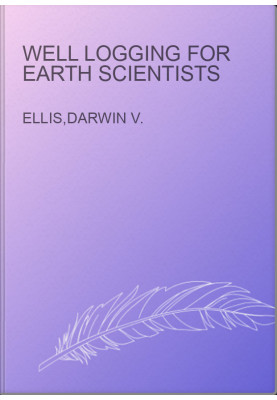Well Logging for Earth Scientists
 Моментальное скачивание
Моментальное скачивание
после оплаты (24/7)
 Широкий выбор форматов
Широкий выбор форматов
(для всех устройств)
 Полная версия книги
Полная версия книги
(в т.ч. для Apple и Android)
Well logging lies at the intersection of applied geophysics, petroleum and geotechnical engineering. It has its roots in the tentative electrical measurements in well bores which were made by the Schlumberger brothers some 80 years ago in the earliest days of systematic petroleum exploration. Today, a variety of specialized instruments is used to obtain measurements from the borehole during, as well as after, the drilling process. This readable and authoritative treatment of the physics of these measurements dispels the "black magic" of well log interpretation by relating them, including those obtained by the latest generation of tools, to rock physics. It offers a thorough exposé of the physical basis of borehole geophysical measurements, as well as an introduction to practical petrophysics - extracting desired properties from well log measurements.Content:Front Matter Preface Table of Contents1. An Overview of Well Logging2. Introduction to Well Log Interpretation: Finding the Hydrocarbon3. Basic Resistivity and Spontaneous Potential4. Empiricism: The Cornerstone of Resistivity Interpretation5. Resistivity: Electrode Devices and How They Evolved6. Induction Devices7. Electrical Devices for Measurements other than Rt8. Basic Nuclear Physics for Logging Applications: Gamma Rays9. Gamma Ray Devices10. Gamma Ray Scattering and Absorption Measurements11. Basic Neutron Physics for Logging Applications12. Neutron Porosity Devices13. Pulsed Neutron Devices14. Nuclear Magnetic Logging15. Introduction to Acoustic Logging16. Acoustic Waves in Rocks17. Acoustic Logging Methods and Applications18. Lithology Identification from Porosity Logs19. Clay Typing and Quantification from Logs20. Saturation Estimation21. Extending Measurements Away from the BoreholeIndex Credits
LF/685958/R
Характеристики
- ФИО Автора
- Darwin V.
Ellis - Язык
- Английский
- ISBN
- 9780444011800
- Дата выхода
- 1987









![[Scandalous Seductions 03]...](https://lionbook.net/1271194-thickbox_default/-scandalous-seductions-03-phantasmagoria.jpg)




![[Apex Magazine 67] • Apex...](https://lionbook.net/1720892-thickbox_default/-apex-magazine-67-apex-magazine-issue-67.jpg)











